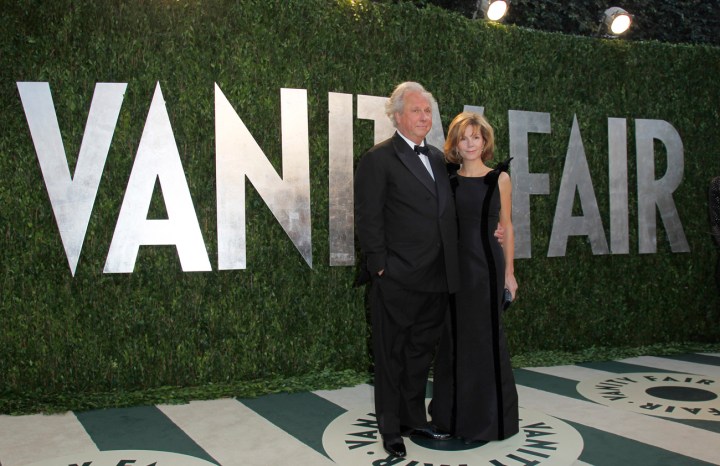Maverick Life, Media, World
Marilyn Monroe: Graydon Carter’s blunting edge

Vanity Fair. The reportage and features are still among the best in the world, but the editor is making more than his allotted share of mistakes where the covers are concerned. For one thing, the faces are almost always white, for another, the lies are starting to creep through. By KEVIN BLOOM.
By all accounts, Graydon Carter is a smart man. After never having graduated from university – he was enrolled at two, Carleton University and the University of Ottawa – he went on to found the award-winning Canadian Review, at the age of 24.
At the age of 29 he was a staffer at Time magazine, by 34 he had moved to its sister publication Life, and before he turned 40 he’d co-founded another magazine, the iconoclastic Spy. He then spent a few years reinventing the New York Observer, before Tina Brown was offered the editorship of the New Yorker and he was invited to take her place at the helm of Vanity Fair when he was all of 43.
But there’s always been something about Graydon Carter, something that brings to mind the overused axiom that a man’s greatest strength is also his greatest weakness. New York magazine nailed that special ingredient in a profile it ran on Carter a few years ago.
“Today, Carter no longer needs to trim his biography with extra filigree,” it noted. “He’s the Jay Leno of the magazine world, the king-size personality controlling the world’s glossiest showcase for the formerly, currently, and would-be famous. Nervous, ubiquitous, and impossibly fabulous, Carter, in the words of his friend Jim Wiatt, president and co-CEO of the William Morris Agency, ‘has transcended being a great editor – he’s really a celebrity.’”
Meaning, like all celebrities, he lives in a dream world. What else could explain his decision to run Marilyn Monroe on his cover for the third time in five years? This month, we see the 50-years-dead diva in sparkling colour, lips red and blonde hair flying in the wind, above the strapline, “Marilyn: Inside the lost nudes”. If it wasn’t so gratuitous, it would be irresistible.
Okay, so maybe it is a little irresistible. Maybe Carter has been at the game so long, and his reputation is so secure, he can get away with this kind of stunt. Maybe he knows his sales are going to rocket off the June edition, and that next month he’ll put a living celebrity back on the cover, a celebrity, say, who isn’t white. And yet there’s one big problem with all these maybes.
Aside from Vanity Fair’s unshakeable confidence in the pulling power of the wafer-thin Caucasian female, the problem is that in its latest edition the magazine is actually lying to us. As the gossip website Gawker points out, the “lost” nudes were never actually lost. They were sent, at Marilyn’s request, to Playboy magazine.
Apparently, the shots were taken by Larry Schiller a few months before Monroe died, and one was returned to Schiller with a note carefully appended. “[T]he very next morning, Marilyn was reported dead at 36,” Vanity Fair explains. “One of her final acts had been to return the nude photo to Schiller, which he found waiting for him at his house. She had written, ‘Send this to Playboy, they might like it.’”
Playboy, it seems, did like it. So much so that they ran an entire collection of Schiller’s nudes in their January 1964 issue. And then they ran them again, in January 2005. “Sorry, Vanity Fair,” Hef’s people barked at Carter’s people from the Playboy website. “Sometimes when something is too good to be true, it really is too good to be true. In the parlance of today: You got got.”
Which brings us back to the implied question further up: what was Carter thinking? It would certainly be fitting for Vanity Fair to run a tribute to Monroe on the 50th anniversary of her death, but that’s only in August, and anyway a collection of nudes isn’t the most sensitive way to commemorate the occasion. No, Carter must’ve been thinking what he was thinking the other two times he’s put her on the cover since 2007, which would arguably be the same thing he was thinking every time he’s decided to put a Kennedy on the cover – a decision he’s made so often it’s become a standing joke.
He must’ve not been thinking at all. Because what’s the point in thinking too much when this, as per New York magazine, is your life: “Carter flies through Manhattan in a chauffeured car, wears custom-tailored shirts, and lights his cigarettes with a tarnished silver Zippo.
“He lives in a Bank Street townhouse, spends his weekends in Connecticut, and dines almost nightly at Da Silvano, usually in a cloud of smoke, usually in some Lazy Susan combination of writers (David Halberstam, Fran Lebowitz, Michiko Kakutani), moguls (Barry Diller, David Geffen, Brian Grazer), fashion people (Diane Von Furstenberg, Kenneth Cole), and visiting Angelenos (screenwriter Mitch Glazer and his wife, actress Kelly Lynch).”
Hey, compared to that, who cares about a stupid magazine? DM
Read more:
- Look familiar? on the Playboy website.
- ‘Lost Photos’ of Marilyn Monroe Mostly the Same Old Photos of Marilyn Monroe, in Gawker.
- Graydon rides the wave, in New York magazine.
Photo: Vanity Fair editor-in-chief Graydon Carter and his wife Anna Scott Carter arrive at the 2012 Vanity Fair Oscar party in West Hollywood, California February 26, 2012. REUTERS/Danny Moloshok.

















 Become an Insider
Become an Insider